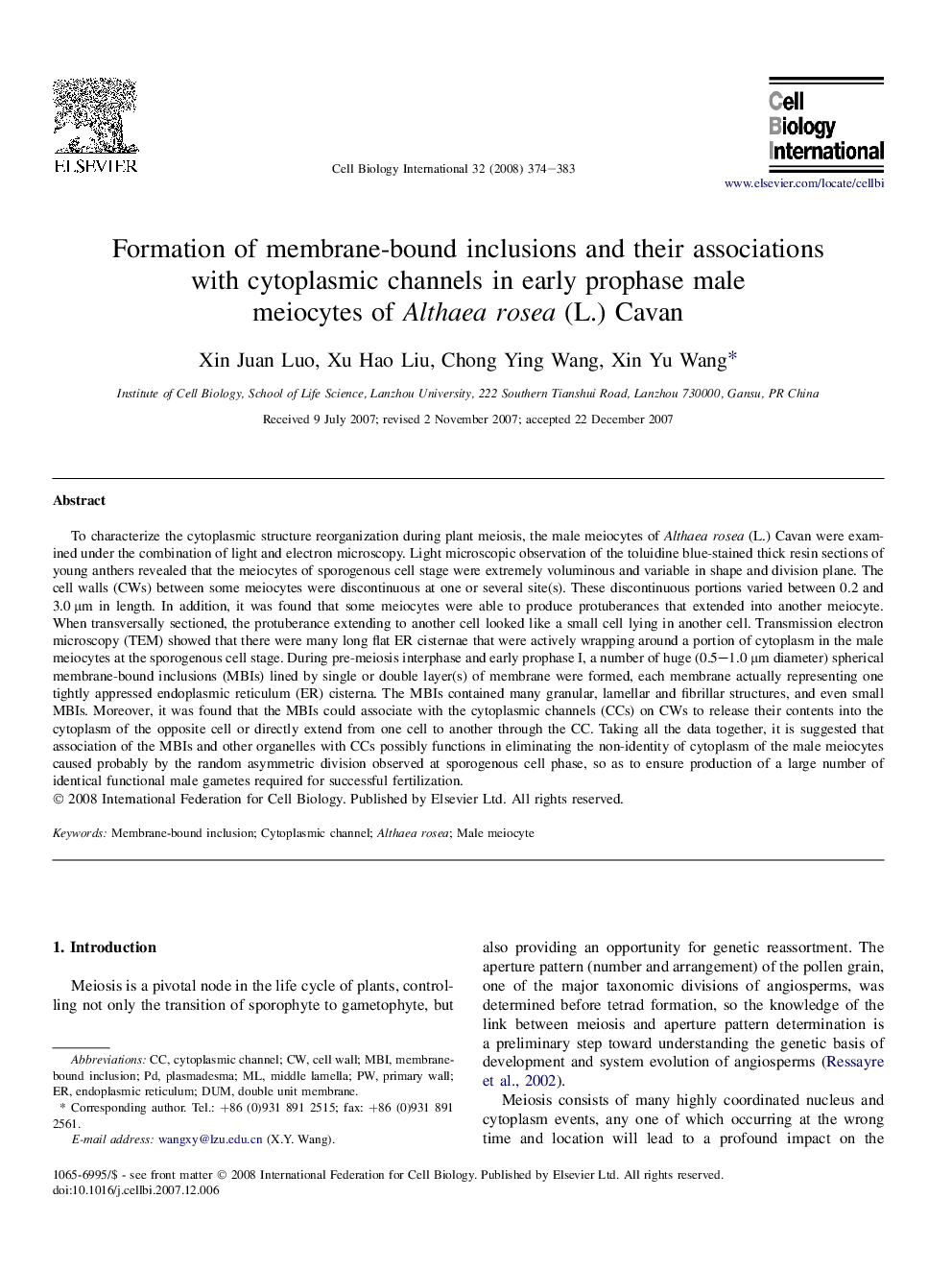| Article ID | Journal | Published Year | Pages | File Type |
|---|---|---|---|---|
| 2067370 | Cell Biology International | 2008 | 10 Pages |
Abstract
To characterize the cytoplasmic structure reorganization during plant meiosis, the male meiocytes of Althaea rosea (L.) Cavan were examined under the combination of light and electron microscopy. Light microscopic observation of the toluidine blue-stained thick resin sections of young anthers revealed that the meiocytes of sporogenous cell stage were extremely voluminous and variable in shape and division plane. The cell walls (CWs) between some meiocytes were discontinuous at one or several site(s). These discontinuous portions varied between 0.2 and 3.0 μm in length. In addition, it was found that some meiocytes were able to produce protuberances that extended into another meiocyte. When transversally sectioned, the protuberance extending to another cell looked like a small cell lying in another cell. Transmission electron microscopy (TEM) showed that there were many long flat ER cisternae that were actively wrapping around a portion of cytoplasm in the male meiocytes at the sporogenous cell stage. During pre-meiosis interphase and early prophase I, a number of huge (0.5-1.0 μm diameter) spherical membrane-bound inclusions (MBIs) lined by single or double layer(s) of membrane were formed, each membrane actually representing one tightly appressed endoplasmic reticulum (ER) cisterna. The MBIs contained many granular, lamellar and fibrillar structures, and even small MBIs. Moreover, it was found that the MBIs could associate with the cytoplasmic channels (CCs) on CWs to release their contents into the cytoplasm of the opposite cell or directly extend from one cell to another through the CC. Taking all the data together, it is suggested that association of the MBIs and other organelles with CCs possibly functions in eliminating the non-identity of cytoplasm of the male meiocytes caused probably by the random asymmetric division observed at sporogenous cell phase, so as to ensure production of a large number of identical functional male gametes required for successful fertilization.
Related Topics
Life Sciences
Biochemistry, Genetics and Molecular Biology
Biophysics
Authors
Xin Juan Luo, Xu Hao Liu, Chong Ying Wang, Xin Yu Wang,
